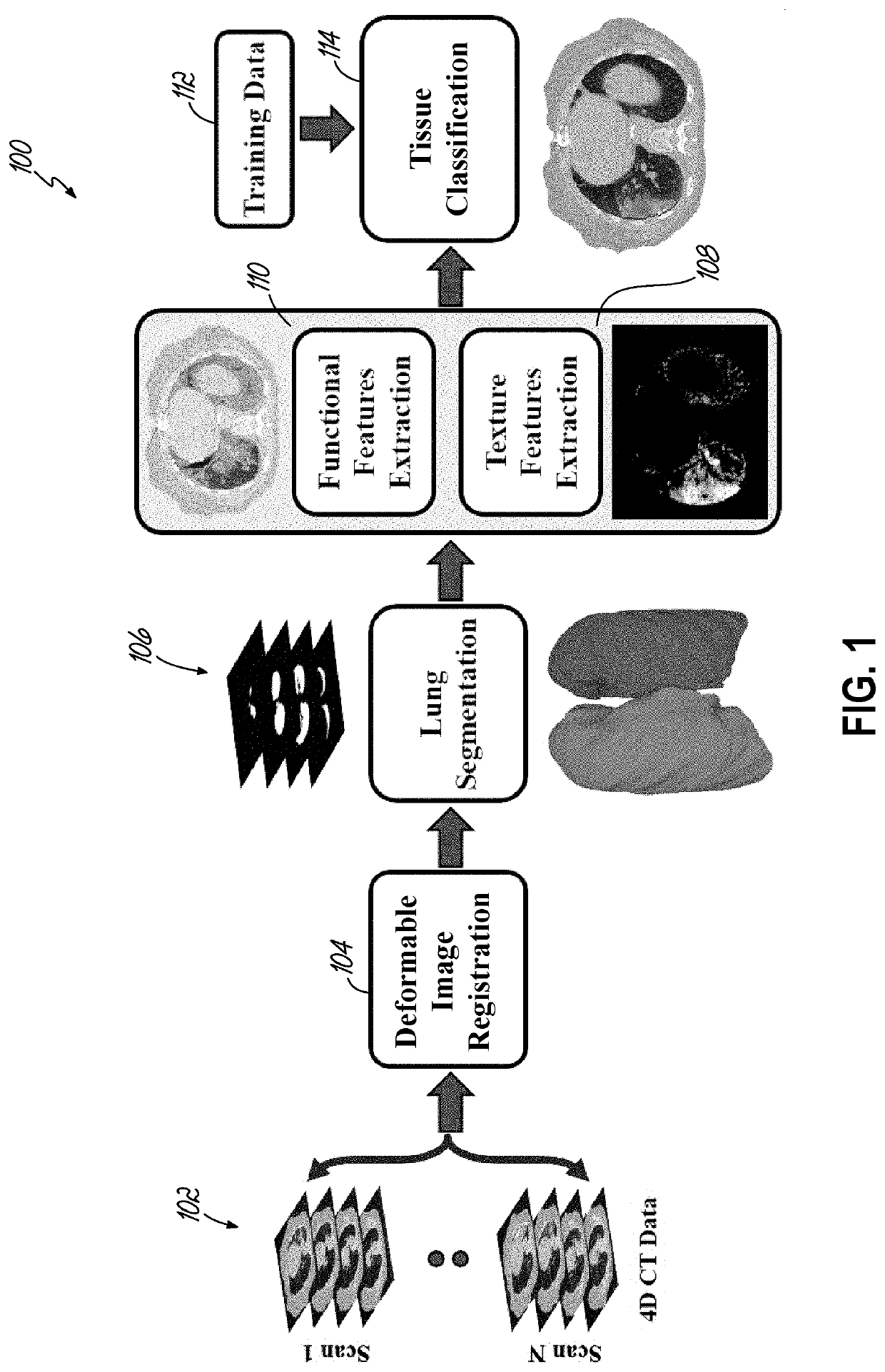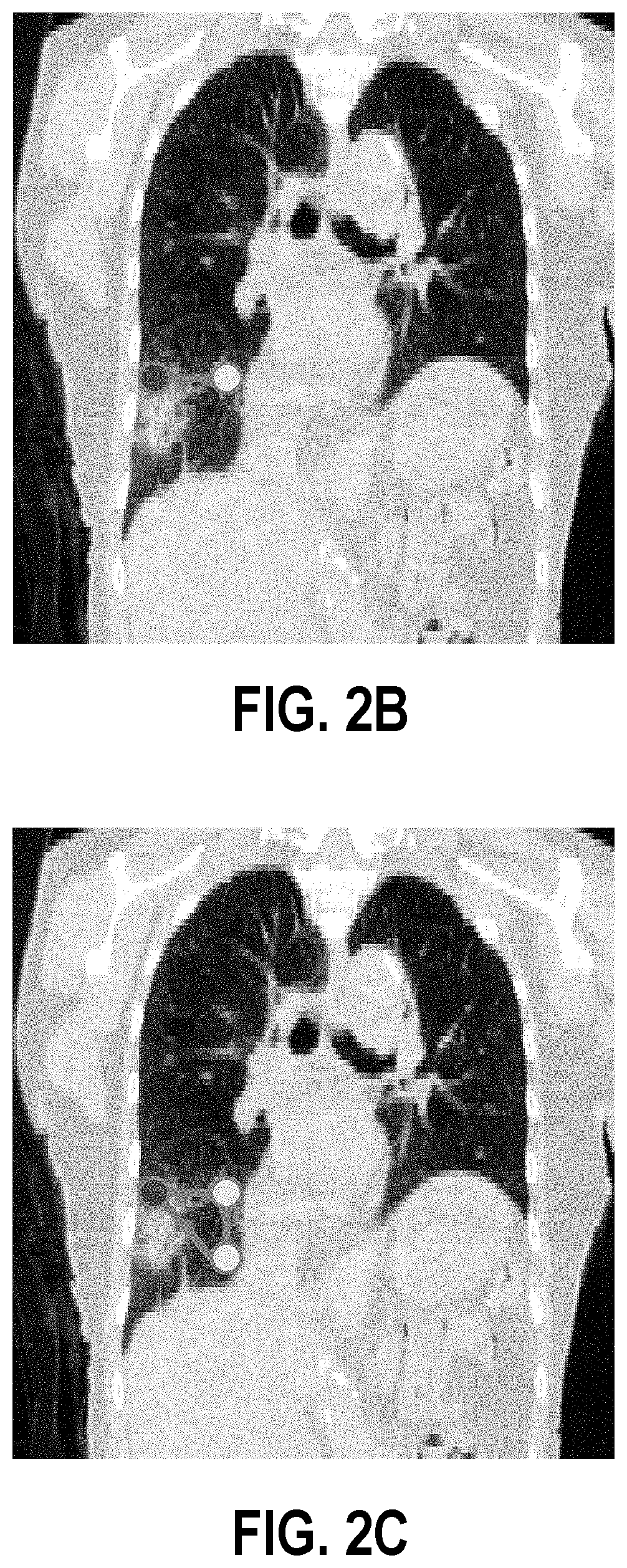Accurate detection and assessment of radiation induced lung injury based on a computational model and computed tomography imaging
a computational model and computed tomography technology, applied in the field of can solve the problems of lung injury, expensive conventional approaches to detection and characterization of radiation-induced lung injury, and more difficult treatmen
- Summary
- Abstract
- Description
- Claims
- Application Information
AI Technical Summary
Problems solved by technology
Method used
Image
Examples
Embodiment Construction
[0051]This document discloses a new and efficient computational framework to accurately align and segment lung regions from four-dimensional computed tomography (4D-CT) images, to extract discriminative features for early detection of radiation-induced lung injury, and to perform the detection.
[0052]FIG. 1 is a schematic illustration of a computational framework 100 that performs efficient detection radiation-induced lung injury, according to an embodiment. The disclosed framework 100, sequentially performs 102 deformable image registration (DIR) of four-dimensional (4D) lung computed tomography (CT) data received as input, performs 106 segmentation of the lung fields with a newly developed image model and methodology, extracts textural 108 and functional 110 features, and performs 114 tissue classification to detect the radiation-induced lung injury using a trainable classifier of lung tissues based on training data 112. The disclosed framework is described in greater detail below....
PUM
 Login to View More
Login to View More Abstract
Description
Claims
Application Information
 Login to View More
Login to View More - R&D
- Intellectual Property
- Life Sciences
- Materials
- Tech Scout
- Unparalleled Data Quality
- Higher Quality Content
- 60% Fewer Hallucinations
Browse by: Latest US Patents, China's latest patents, Technical Efficacy Thesaurus, Application Domain, Technology Topic, Popular Technical Reports.
© 2025 PatSnap. All rights reserved.Legal|Privacy policy|Modern Slavery Act Transparency Statement|Sitemap|About US| Contact US: help@patsnap.com



